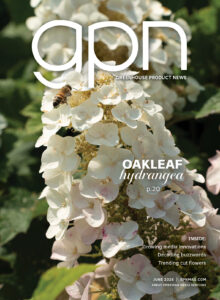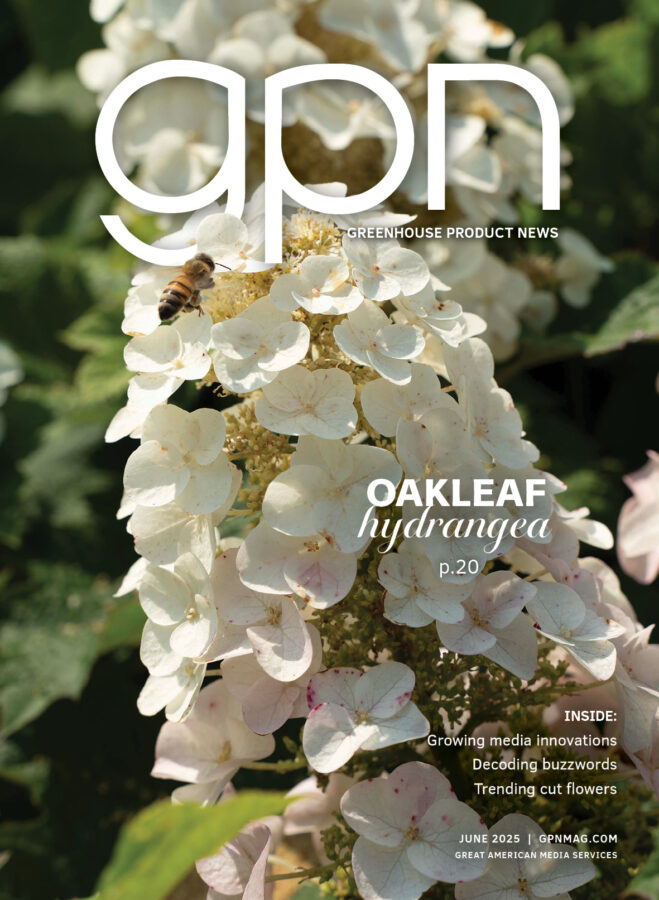From Family Farm to Controlled Environment Agriculture: Integrating Plant Science and Technology
Today’s guest, Neil Mattson, earned his undergraduate degree at the University of Minnesota in 2000 and his master’s and Ph.D. degrees at the University of California—Davis in 2002 and 2007, respectively. Upon graduation he joined the faculty at Cornell University’s School of Integrative Plant Science where he currently holds the rank of associate professor and title of greenhouse Extension specialist.
Peter: Welcome Neil, thank you for discussing your work in controlled environment agriculture (CEA). The two of us share a similar life path from childhood to university life that we consider special and believe shaped our career trajectories and industry contributions; tell us about yours.
Neil: Oh, boy. Peter, this could become a long story. I grew up on a small family farm in north central Minnesota. When my dad was growing up it was a dairy and turkey operation that supported their family; when I grew up it was a beef cow/calf operation. Like most small family farms, my mom’s career off the farm as a registered nurse was our main income.
At any rate, it was a great way to grow up. My family had large vegetable and flower gardens for our own consumption and my grandma, who lived on the edge of the farm, got me interested in flower gardening and exhibiting flowers from a young age. My older brother and I were in 4-H. I was involved in both flower and vegetable gardening, but since my brother was older he got to choose to exhibit the vegetables at fairs, which left me to focus on flowers.
Peter: I couldn’t say it better, Neil, what a great way to grow up. We consider ourselves fortunate to have grown up on farms. In my case, my dad, a meat cutter, joined my mom and grandparents on my grandfather’s vegetable farm. His job served as my family’s off-farm income as your mom’s did; in my mind this income also represents a necessary family farm subsidy.
My dad soon developed a love for the farm and his foresight to build a greenhouse and shift from edible crops to flowers allowed him to quit cutting meat and operate the greenhouse full time. It also lit up my career takeoff runway like a Christmas tree. By the way, he fought quite a battle with my grandfather over that first greenhouse. His father-in-law couldn’t grasp people spending money on flowers after surviving the great depression. Go figure, I describe my recent shift in research focus as “from flower to food” while back then my dad led us from food to flowers.
It’s interesting how you blended plant physiology with much more than the standard dose of advanced technology. Tell us about that, because it helps to explain your current research focus at Cornell. I understand your master’s advisor at Minnesota, John Erwin, guided you toward UC Davis to complete your graduate education and today you serve as director of Cornell’s Controlled Environment Agriculture Group.
Neil: Yes, John’s generosity nudged me toward expanding my academic training by looking beyond the University of Minnesota system. I met Heiner Lieth (UC Davis) at an ASHS conference in Sacramento. Heiner’s background was mathematical modeling and he had developed a very detailed model for the growth of cut flower roses back when roses were still a big crop in California.
Joining Heiner’s lab was the perfect integration of my computer science background and my love of flowers. For my Ph.D., I studied how flush harvesting cycles of rose stems affected their cyclical uptake and storage of nutrients and then I integrated my nutrient uptake model with Heiner’s plant growth model.
I was then fortunate to get a faculty position at Cornell with the original title of Greenhouse Floriculture and I was blessed to join a strong floriculture team, especially as I learned to tackle the extension side of my position (Figure 1). Bill Miller, Mark Bridgen, Margery Daughtrey, John Sanderson and Elizabeth Lamb all served as great mentors to me.
My graduate studies path prepared me for my current research focus on the physiology of plants in controlled environments to optimize resource use efficiency in commercial greenhouse production. Specific research interests that I and my group are working on include strategies to reduce greenhouse energy use, LED lighting, conventional and organic nutrient management, and plant abiotic stress physiology.
Peter: You and I also share a recent shift in research focus from ornamental crops to edible crops. Tell us about how you decided to diversify your focus.
Neil: After getting established at Cornell I began interacting more with the Controlled Environment Agriculture program, which had a long-standing reputation of optimizing greenhouse hydroponic vegetable production, especially lettuce. The program was founded by Lou Albright, a biological and environmental engineer, and Robert Langhans, a horticulturist. By the time I arrived at Cornell, Langhans was retired but still active and Albright was approaching retirement.
Peter: I don’t remember the year but soon after Bill Miller arrived at Cornell, Bob Langhans brought Bill and a bus load of undergrads on a tour of Massachusetts greenhouse operations and mine was one of the stops. I met Bill that day and enjoy interacting with him whenever possible. Also, Margery, John, Mark and I have crossed paths at grower conferences for decades, I can attest to their mentoring skills. Continue explaining your research focus.
Neil: The work of the CEA group here at Cornell, including sensors and controls to deliver precise greenhouse treatments, energy modeling, etc., was a good fit with some of my previous interests. Over time, three things became clear to me. First, greenhouse vegetable production was increasing rapidly in New York State in part due to the locally grown movement and our big urban centers. In the past 10 years, the value of greenhouse vegetable production has grown about 10% annually, while floriculture, although much larger, was a mature industry. Second, I was receiving more questions from greenhouse vegetable folks and, again, while floriculture was still very important it was more well established and there were not as many hard to answer questions. Third, with the postrecession years Cornell was not going to be able to replace Lou Albright’s position.
In 2013, I was tenured and got approval to change my job title to Greenhouse Horticulture to address the fact that I was going to work with Lou to take over the CEA program. I very much wanted that program to continue and be allowed to cover greenhouse vegetables as well as flowers. Floriculture is still where my heart is but once I decided to really take ownership of a greenhouse vegetable program, that has opened up a lot of doors in terms of grant funding, industry support, and passionate students. Beginning in 2016, I have taught an undergrad class on Hydroponic Food Production, which is frequently full and has led to many student internships and jobs. Cornell also has a one-year professional master’s program in Plant Science and we recently added a CEA specialization to their tracks: cea.cals.cornell.edu.
Peter: As with many of our colleagues you have risen to the challenge, largely brought about by fewer research funding resources, of forming collaborative relationships with researchers at other universities. Tell us about the GLASE project you’re working on.

Neil: The GLASE project (Greenhouse Lighting and Systems Engineering) is a seven-year project funded by New York State Energy Research and Development Authority (www.glase.org). New York State has ambitious energy reduction/renewable energy targets. They have a forward thinking view that if the greenhouse vegetable industry is going to grow quickly (which they really want to encourage from a job’s standpoint) and is such an energy intensive industry, then we need growers to adopt best practices to limit their energy impact.
The project is co-led by myself at Cornell and Rensselaer Polytechnic Institute’s Lighting Enabled Systems & Applications (LESA) group, which has strong capabilities in lighting and sensor engineering. A.J. Both at Rutgers University also contributes to the project, especially validating lighting system performance and promoting horticultural lighting standards. The project takes a holistic, multidisciplinary view to reducing energy use in greenhouse lighting with several components. In greenhouse lighting, we seek to first fully utilize sunlight so that we can supplement it most energy efficiently. Building on Lou Albright’s work developing predictive lighting algorithms that allow you to hit a daily light integral target while reducing excessive shading and subsequent over-lighting, we are testing at the university research scale (and then at commercial pilot facilities) various lighting control strategies.
Peter: I’m sure you and the group are enjoying the energy use optimization objective of the project. My thought on the indoor CEA challenge is that first we need to understand sunlight more completely regarding light quantity and quality through a day, season, year. Only after we’ve defined it can we then focus on optimizing it indoors. The GLASE work you describe in greenhouse lighting is fascinating. What other factors of CEA systems are you investigating?
Neil: Accounting for the benefits of CO2 enrichment are also really important and Lou Albright had a model for lettuce to determine a virtual daily light integral based on light and CO2 (which can really lead to substantial savings in electrical lighting energy, and substantial net savings when you account for the CO2 cost too). We are working on expanding those models to tomatoes, strawberries, and, most recently, CBD hemp.
Peter: Well, my friend, we’ve covered much ground to this point but I still have pages of thoughts you sent in your initial draft. I’ll look forward to continuing this discussion with you in a future column. For now, Neil, thank you for sharing your research with us.









 Video Library
Video Library 


















